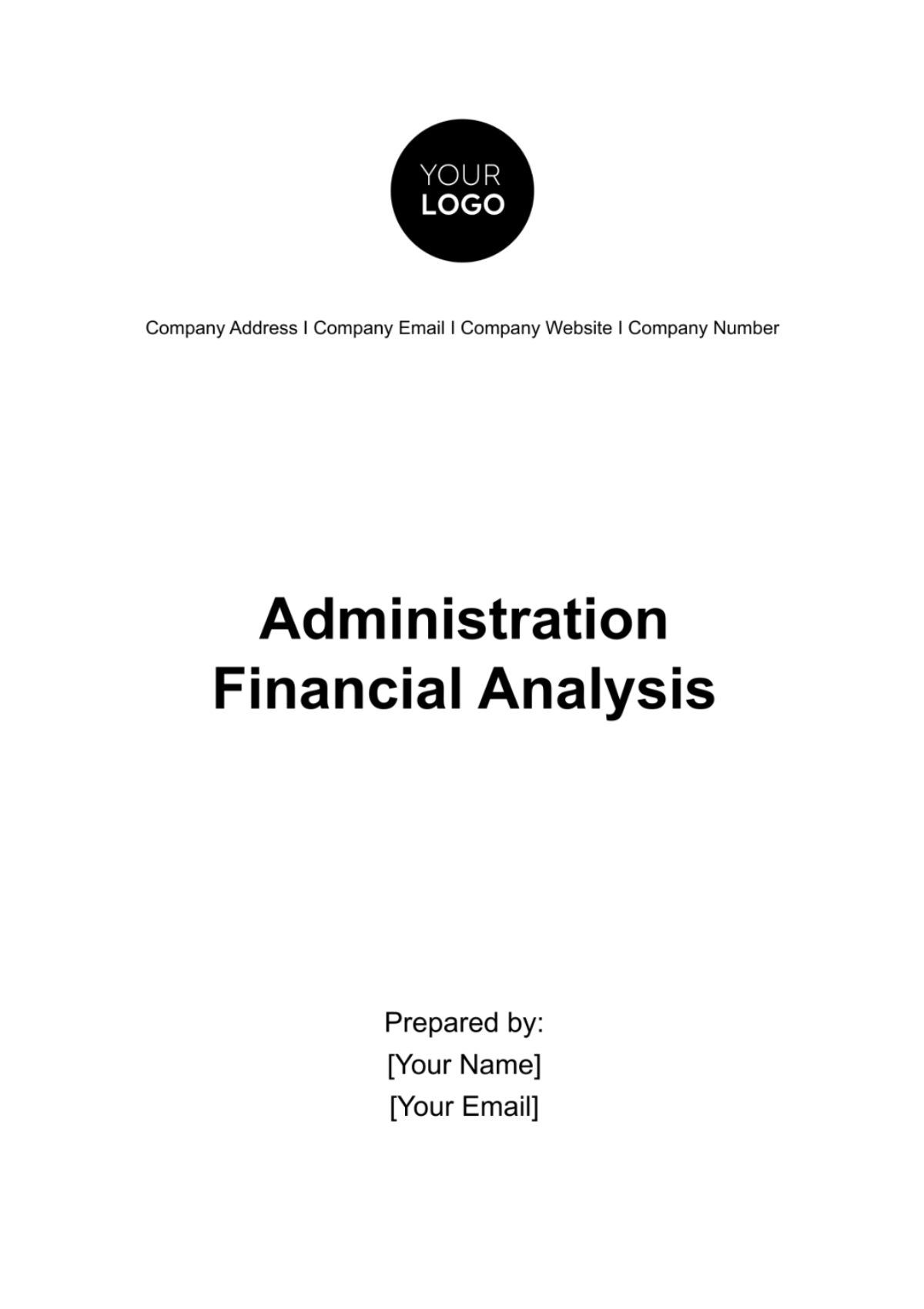A. Executive Summary
The Executive Summary encapsulates the key findings and recommendations of [Your Company Name]'s Administration Financial Analysis. It highlights our financial performance, operational efficiency, and adherence to US laws and standards. Through a comprehensive evaluation, we have identified strategic opportunities for growth, areas for improvement, and actionable recommendations to enhance financial health and administrative effectiveness. This summary provides a concise overview to guide decision-makers towards informed strategies and actions.
B. Introduction
In today's dynamic business landscape, effective financial management is critical for the success and sustainability of any organization, especially startups. As a burgeoning entity in the competitive market, [Your Company Name] recognizes the paramount importance of conducting a thorough Administration Financial Analysis. This analysis serves as a cornerstone for strategic decision-making, resource allocation, and risk mitigation. By meticulously evaluating our financial performance, operations, and management practices, we aim to identify strengths, weaknesses, opportunities, and threats to guide our path towards sustainable growth and profitability.
Through this Administration Financial Analysis, we endeavor to gain valuable insights into our financial health, assess our adherence to US laws and standards, and enhance transparency and accountability in our administrative processes. By proactively addressing financial challenges and leveraging opportunities, [Your Company Name] is poised to optimize resource utilization, mitigate risks, and achieve our overarching business objectives in alignment with regulatory requirements and industry best practices.
C. Financial Statements Analysis
This section presents a detailed analysis of [Your Company Name]'s financial statements, focusing on key metrics such as profitability, liquidity, solvency, and efficiency ratios. These metrics offer valuable insights into our financial health and operational efficiency, guiding strategic decision-making and resource allocation.
Financial Metric | Calculation/Formula | Current Year | Previous Year | Industry Average |
Profitability Ratios |
Gross Profit Margin | (Gross Profit / Revenue) x 100 | 45% | 42% | 40% |
Net Profit Margin | (Net Profit / Revenue) x 100 | 20% | 18% | 15% |
Liquidity Ratios |
Current Ratio | Current Assets / Current Liabilities | 2.5 | 2.2 | 2.0 |
Quick Ratio | (Current Assets - Inventory) / Current Liabilities | 1.5 | 1.3 | 1.0 |
D. Trend Analysis
This section offers a comprehensive examination of [Your Company Name]'s financial performance trends over the period from 2019 to 2024. Through the visual representation provided in the accompanying line graph titled "Financial Performance Trend Analysis (2050-2055)," we explore the trajectory of key metrics including revenue, expenses, net profit, and various financial ratios. This analysis enables insights into our historical performance and informs strategic decision-making for the future.
E. Budget Analysis
This section presents a simplified overview of [Your Company Name]'s budget analysis. The table below outlines budgeted amounts and actual expenditures for key expense categories, allowing for comparison and evaluation of budget performance.
Expense Category | Budgeted Amount ($M) | Actual Expenditure ($M) |
|---|
Marketing | 2 | 1.8 |
Research & Development | 1.5 | 1.6 |
Operations | 1.8 | 1.9 |
Administrative | 1.2 | 1.3 |
Total | 6.5 | 6.6 |
H. Cash Flow Analysis
This section provides an overview of [Your Company Name]'s cash flow activities for the fiscal year ending [Month, Day, Year]. The table below summarizes cash inflows and outflows across operating, investing, and financing activities:
Activity | Cash Inflows ($M) | Cash Outflows ($M) | Net Cash Flow ($M) |
|---|
Operating Activities | $20.1 | $19 | $1.1 |
Investing Activities | | $0.8 | -$0.6 |
Financing Activities | $1.5 | $0.7 | $0.8 |
Net Increase in Cash | $21.6 | $21.3 | $0.3 |
I. Risk Analysis
Risk analysis is crucial for [Your Company Name]'s strategic decision-making. This section examines potential threats to financial stability and operational efficiency, enabling proactive risk management strategies.
Market Risk: Fluctuations in market demand or competition could affect sales and profitability. We continuously monitor market trends and diversify our customer base to mitigate this risk.
Credit Risk: Non-payment by customers or default on loans may impact cash flow. We conduct credit checks and set credit limits to minimize exposure to bad debts.
Operational Risk: Disruptions in operations due to system failures or human errors could disrupt business activities. We implement redundancy measures and provide training to staff to minimize operational risks.
Regulatory Risk: Non-compliance with regulations could lead to fines or legal actions. We stay updated with regulations and ensure strict adherence to compliance standards to mitigate regulatory risks.
Through proactive risk management strategies, we aim to minimize vulnerabilities and capitalize on opportunities for sustainable growth and resilience.
J. Recommendations
Following a thorough analysis of [Your Company Name]'s financial administration, these recommendations are tailored to improve efficiency and mitigate risks. Implementation of these strategies will bolster our financial health and strengthen our position in the market.
Enhance Cost Control Measures: Implement tighter controls on discretionary spending and negotiate favorable terms with suppliers to reduce expenses without compromising quality.
Diversify Revenue Streams: Explore new markets or product lines to reduce dependency on existing revenue sources and mitigate risks associated with market fluctuations.
Invest in Technology: Upgrade systems and processes to enhance efficiency, streamline operations, and improve decision-making through data-driven insights.
Strengthen Risk Management Framework: Develop a comprehensive risk management strategy to identify, assess, and mitigate potential risks across all aspects of the business, ensuring resilience and adaptability to changing market conditions.
Administration Templates @ Template.net






























